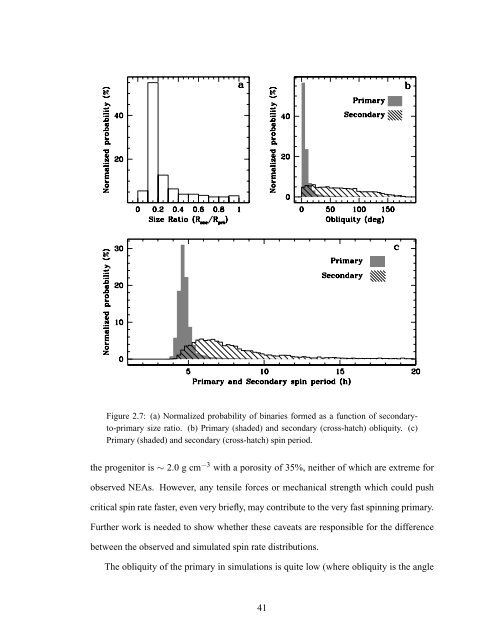Forming Binary Near-Earth Asteroids From Tidal Disruptions
Forming Binary Near-Earth Asteroids From Tidal Disruptions
Forming Binary Near-Earth Asteroids From Tidal Disruptions
You also want an ePaper? Increase the reach of your titles
YUMPU automatically turns print PDFs into web optimized ePapers that Google loves.
Figure 2.7: (a) Normalized probability of binaries formed as a function of secondaryto-primarysize ratio. (b) Primary (shaded) and secondary (cross-hatch) obliquity. (c)Primary (shaded) and secondary (cross-hatch) spin period.the progenitor is ∼ 2.0 g cm −3 with a porosity of 35%, neither of which are extreme forobserved NEAs. However, any tensile forces or mechanical strength which could pushcritical spin rate faster, even very briefly, may contribute to the very fast spinning primary.Further work is needed to show whether these caveats are responsible for the differencebetween the observed and simulated spin rate distributions.The obliquity of the primary in simulations is quite low (where obliquity is the angle41












